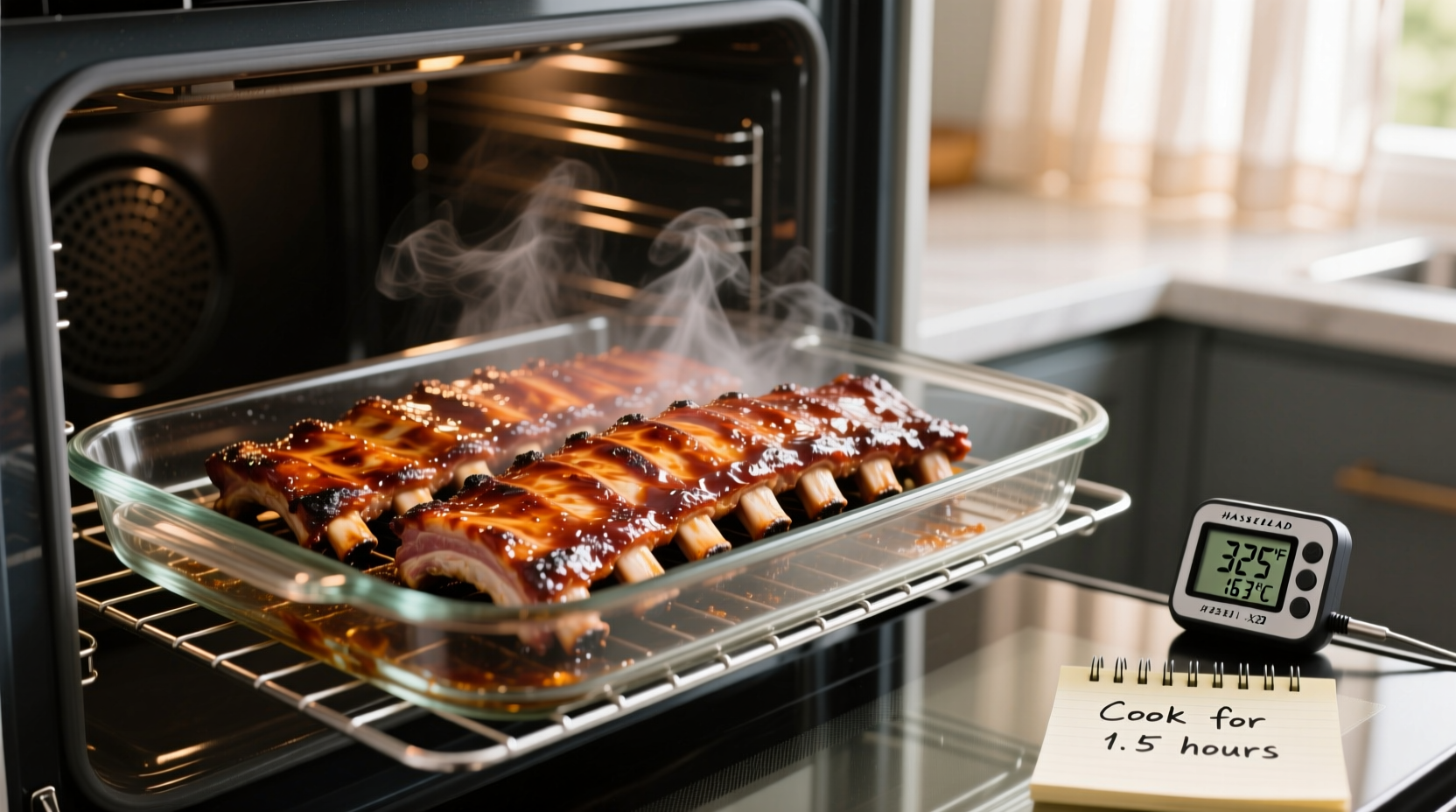Perfect Riblets Every Time: Your Complete Oven Cooking Guide
Nothing beats tender, juicy riblets cooked to perfection in your oven. Getting the temperature right is crucial for transforming these flavorful cuts into a mouthwatering meal without drying them out or risking food safety issues. Let's explore exactly how to achieve restaurant-quality riblets in your home kitchen.
Why Temperature Matters for Riblets
Riblets, the smaller sections cut from pork spareribs, require precise temperature control. Cooking at too high a temperature causes the meat to seize up and become tough, while too low a temperature won't properly render the fat and connective tissues that make riblets so succulent.
According to the USDA Food Safety and Inspection Service, pork should reach a minimum internal temperature of 145°F (63°C) with a 3-minute rest period to ensure food safety while maintaining optimal tenderness. This guideline, established in their Safe Minimum Cooking Temperatures documentation, represents the scientific consensus for safe pork preparation.
Step-by-Step Riblet Cooking Process
Preparation Essentials
Before you even preheat your oven, proper preparation sets the stage for success:
- Remove the membrane from the bone side of the riblets for better texture
- Pat the meat dry with paper towels to ensure proper browning
- Apply your preferred dry rub or marinade, allowing at least 30 minutes for flavors to penetrate
- Bring riblets to room temperature (about 30 minutes) before cooking
Oven Temperature Strategy
While some recipes suggest higher temperatures, the 325°F (163°C) sweet spot delivers consistent results:
- Preheat your oven to 325°F (163°C) - this moderate temperature allows for slow, even cooking
- Place riblets on a wire rack over a baking sheet to allow air circulation
- For extra moisture retention, wrap in foil after the first 90 minutes
- During the final 30 minutes, remove foil and apply sauce if desired
| Oven Temperature | Cooking Time | Internal Temperature | Texture Result |
|---|---|---|---|
| 325°F (163°C) | 2-2.5 hours | 145°F (63°C) | Perfectly tender with slight chew |
| 350°F (177°C) | 1.5-2 hours | 145°F (63°C) | Good but slightly less tender |
| 275°F (135°C) | 3-3.5 hours | 145°F (63°C) | Fall-off-the-bone tender |
| 400°F+ (204°C+) | Under 1 hour | 145°F (63°C) | Dry and tough texture |
Monitoring Doneness: Beyond the Clock
While cooking times provide a guideline, the only reliable way to determine riblet doneness is by checking the internal temperature. Digital meat thermometers have revolutionized home cooking by providing precise readings.
Insert your thermometer into the thickest part of the meat, avoiding bones. When the thermometer reads 142°F (61°C), remove the riblets from the oven - the temperature will continue to rise 3-5 degrees during the essential 3-minute rest period, reaching the safe 145°F (63°C) mark.
Additional visual cues include:
- Meat pulling back slightly from the bones (about 1/4 inch)
- Juices running clear rather than pink
- Meat feeling firm but yielding when pressed
Avoiding Common Riblet Cooking Mistakes
Even with the right oven temperature, these pitfalls can ruin your riblets:
- Skipping the rest period - Cutting immediately causes juices to escape
- Opening the oven too frequently - Each opening drops the temperature significantly
- Using sugar-heavy sauces too early - Burns at lower temperatures
- Overcooking for "fall-off-the-bone" - Properly cooked riblets should have slight resistance
Adjusting for Different Oven Types
Not all ovens perform equally, so consider these adjustments:
- Convection ovens: Reduce temperature by 25°F (14°C) as circulating air cooks more efficiently
- Older ovens: Use an independent oven thermometer to verify actual temperature
- Gas ovens: May have hotter spots - rotate baking sheet halfway through cooking
- Electric ovens: Typically maintain more consistent temperatures throughout
Serving Your Perfectly Cooked Riblets
After that crucial rest period, slice between the bones and serve immediately. Pair with classic sides like:
- Creamy coleslaw to balance the richness
- Garlic mashed potatoes for comforting starch
- Grilled corn with chili-lime butter
- Simple green salad with apple cider vinaigrette
Storing and Reheating Leftovers
Proper storage maintains quality for future enjoyment:
- Refrigerate within 2 hours of cooking in airtight containers
- Consume within 3-4 days for best quality
- To reheat: Wrap in foil and warm at 275°F (135°C) until internal temperature reaches 140°F (60°C)
- Avoid microwaving as it makes meat rubbery











 浙公网安备
33010002000092号
浙公网安备
33010002000092号 浙B2-20120091-4
浙B2-20120091-4